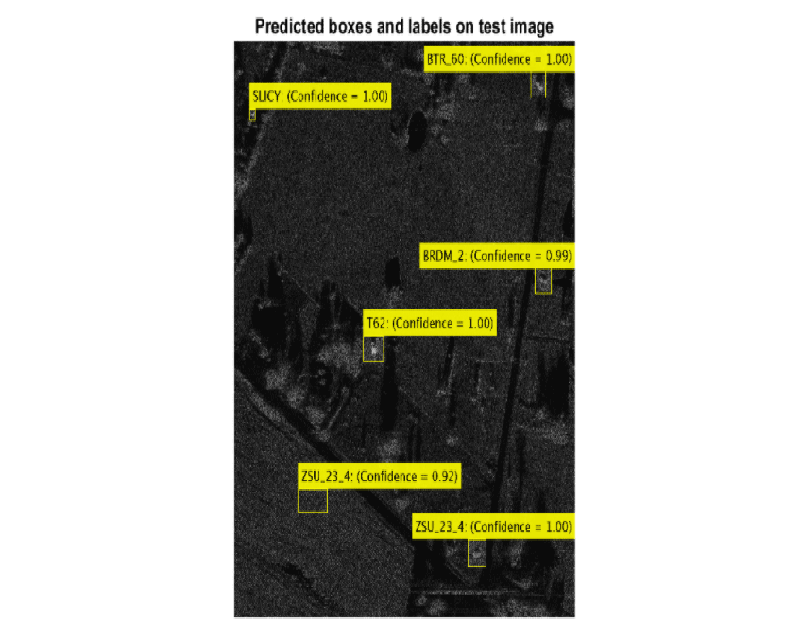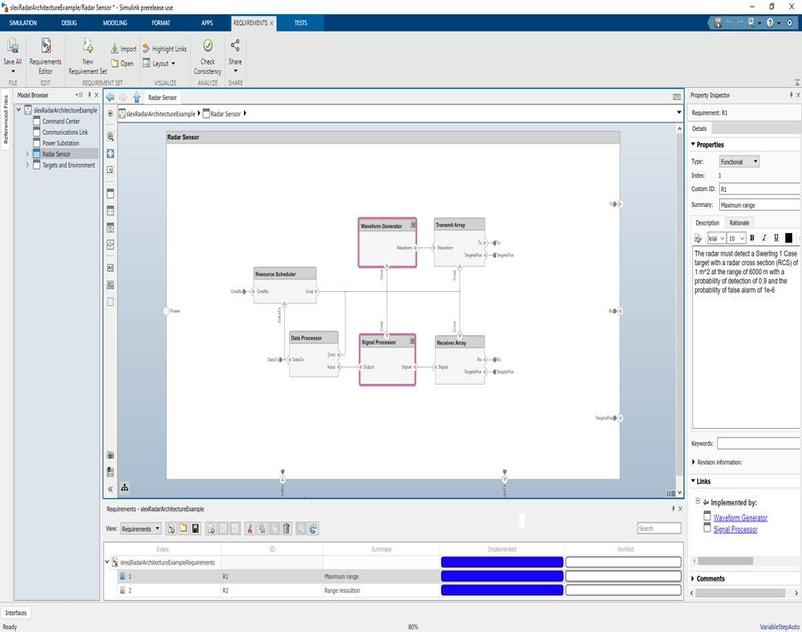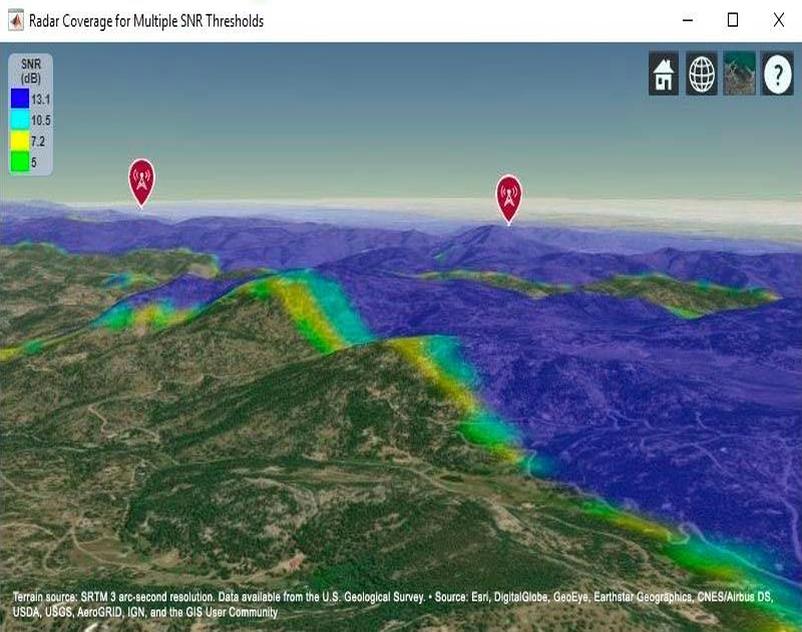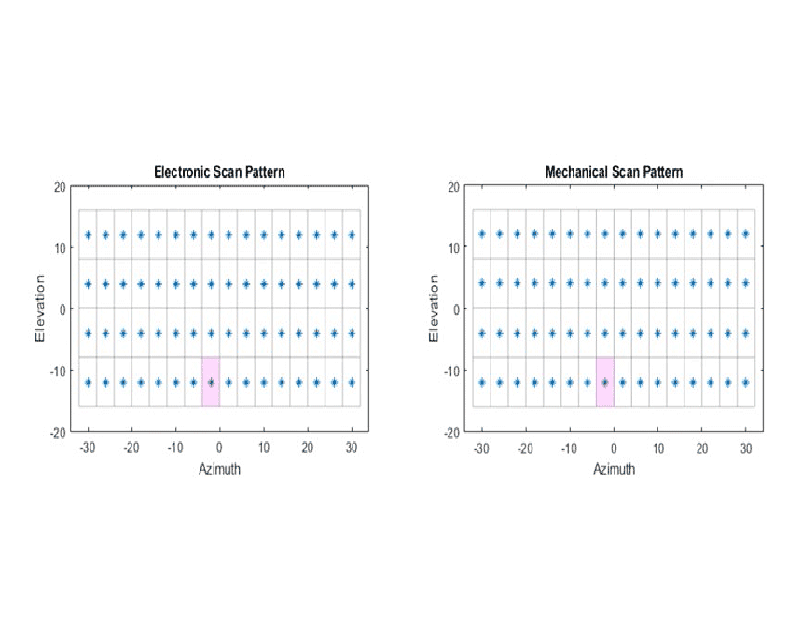Radar Toolbox
Radar toolbox overview
Radar Toolbox provides advanced algorithms and tools for designing, simulating, analyzing, and testing multifunction radar systems. With reference examples, you can quickly implement radar solutions for airborne, ground-based, shipborne, and automotive applications. The toolbox supports end-to-end workflows, from requirements analysis and design to deployment and field data analysis.
The Radar Designer app enables interactive link budget analysis and trade-off evaluations at the radar equation level. The toolbox includes comprehensive models for transmitters, receivers, propagation channels, targets, jammers, and clutter. You can simulate radar systems at varying levels of abstraction using probabilistic and I/Q signal-level models. It also provides signal and data processing algorithms to analyze detections from simulations or real-world radar data.
Designed for modern RF environments, the toolbox supports cognitive radar design, enabling operation in congested RF spectrum conditions. For automotive applications, it offers probabilistic and physics-based radar sensor models, allowing the simulation of micro-Doppler signatures and object lists. Additionally, it supports C code generation for faster simulations and rapid prototyping.

AI for Radar
Use radar signal simulations to train machine and deep learning models for target and signal classification. Label radar signals either manually or automatically.

Multifunction Radar
Use closed-loop radar simulation for multifunction radar systems. Model systems that adapt to environmental conditions through waveform selection, pulse repetition frequency (PRF) agility, frequency agility, and interference mitigation.

Automotive Radar
Use probabilistic and physics-based models to design radar sensors. Simulate MIMO antennas, waveforms, and I/Q radar signals. Generate micro-Doppler signatures, detections, clusters, and tracks.

Radar Systems Engineering
Use System Composer to design architectures for multifunction radars, incorporating subsystem componentization, traceability, and requirements-driven testing.
Detecting and Tracking Statistics for Radar Equations
Use the Radar Designer app to explore designs, assess detectability factors, analyze receiver operating characteristics (ROC) and tracker operating characteristics (TOC), and generate range-angle-height (Blake) charts.

Environment and Clutter
Use modeling and analysis to evaluate radar propagation effects, including land and sea clutter, atmospheric attenuation from gas, fog, rain, and snow, as well as lens effect losses. Characterize clutter based on sea state and permittivity, along with land surface properties such as vegetation type and permittivity.

Synthetic Aperture Radar (SAR)
Use SAR link budget estimation for airborne and space applications, and simulate and test image formation algorithms for both spotlight and stripmap modes.

Radar Sensor Models: Signal, Detection, and Track Generators
Use probabilistic or physics-based levels of abstraction to simulate radar data. For faster simulations, generate probabilistic radar detections and tracks to test tracking and sensor fusion algorithms.

Radar Scenes: Land and Sea Surface Models
Use land and sea surface modeling to simulate radar returns at various abstraction levels. Assess the impact of surface occlusions on probabilistic detections and received I/Q signals. Synthesize radar data from realistic scenes, incorporating surface models with custom reflectivity maps and Speckle, to test and evaluate image formation algorithms.